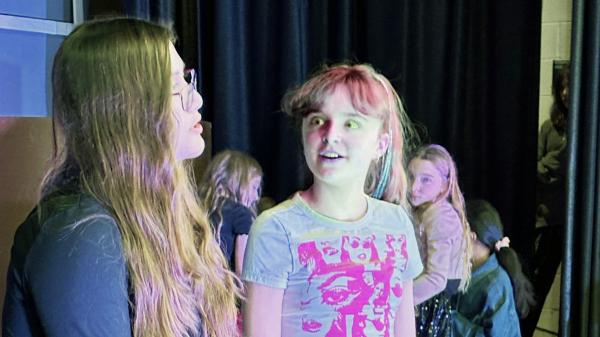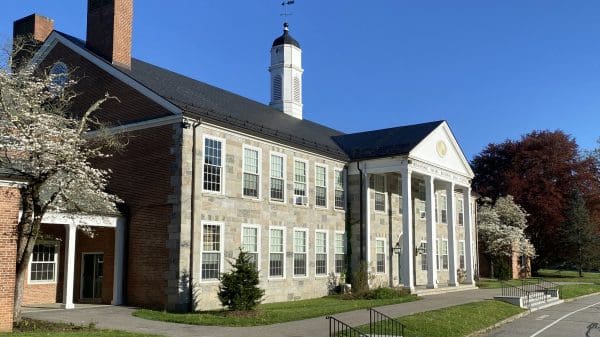
My grandfather had a birthday this month. As the family historian, I was probably the only person in the world who remarked the day as he was born in 1893 and it is easy to forget about someone who has been gone for 64 years.
Gramp was a simple man. He was the fourth child of an itinerant farm family that moved from town to town every year or so until they saved enough money to buy a farm of their own.
By then, Gramp was a young man, poorly educated, and part of the family farm workforce. Like many children of his day, he attended one-room schoolhouses where teachers not much older than himself conducted classes.
His rudimentary education—made worse by the fact he was the class clown—stopped with the eighth grade, by which time he could read, write, and “cypher.”
Nevertheless, in the society in which he lived, he was adequately prepared to conduct his own successful business.
How different it is today. My granddaughter, also from a farming family, and her friends are preparing for medical careers. These young women, all from families of very ordinary means and public-school backgrounds, were nevertheless prepared for a rarefied educational world.
But even with the opportunities these girls enjoyed, education is never conducted on an even playing field. Natural abilities, school funding, even the luck of the draw in the teachers encountered, all affect the quality of the education attained. That that education is becoming ever more demanding cannot be denied.
While the early 20th-century boy may have left school in his teens to work in the fields, his education at least reflected his world. Today, with technology galloping ahead and AI threatening to eliminate jobs in industries ranging from healthcare to agriculture, all employment will be disrupted.
So, the 21st-century farm boy had better look out. He will no longer be needed to plow the fields or milk the cows. What he will be needed for is yet to be determined.
Many argue that AI will create new jobs à la the Industrial Revolution, but the jobs expected to emerge in our brave new world are not necessarily for the academically unmotivated. And, let’s face it, not all our students can or should go on to college. How we can train our young people for jobs that do not yet exist is a question for educators and not mere journalists, but I am sure of one thing—disrupting our educational system will not help.
President Trump’s executive order to dismantle the federal Department of Education raises troubling questions about the uniformity and predictability of American education and how graduates of differing educational backgrounds will fare in the workforce.
Returning educational policy to the individual states promises to produce a hodgepodge of outcomes in an era when there is already enough disparity.
A 2023 Pew Research Center report highlighted the chasm between Republican and Democratic parents and what they want from the educational system. Parents are divided along partisan lines on topics such as religion in school, slavery, gender identity, sex education, and America’s position vis-à-vis other countries.
K-12 mission statements from public schools in areas where the majority of residents voted Democratic in 2020 are at least twice as likely to include the words “diversity,” “equity” or “inclusion” as those in Republican-voting areas according to an April 2023 Pew Research Center analysis.
Levels of school funding also vary sharply between Red and Blue states. New York and Washington, D.C., spend about three times more than schools in Utah and Idaho. Even though New York pays its staff much higher salaries, it still employs almost twice as many people per student than Utah or Arizona.
Only about one-third of public school teachers in Oklahoma have a master’s degree, compared to nearly all of them in Massachusetts, Connecticut, and New York. These differences are, not illogically, reflected in achievement scores between Red and Blue states.
These facts do not necessarily reflect monetary realities but rather differing ideologies. The vast majority of Red states are rural, more homogenous, with conservative values focused on limited government and low taxes, according to a 2023 article in University World News.
The article argues that Blue states, on the other hand, are characterized by population concentrations in more liberal and diverse urban centers, tend to have higher educational attainment rates, and value public universities and colleges.
By contrast, a Pew Research Center survey found that some 59 percent of Republicans believe colleges and universities have a negative effect on American society, are critical of professors, and feel that educators are influenced by political leftist activism.
With such variant attitudes, what can the future bring?
Local educators are taking a wait-and-see attitude, but with about half of the Department of Education employees already laid off, efficiency seems sure to be compromised and programs that have benefited low-income and disabled students to be negatively affected.
The National Education Association contends that Title 1, which directs money to schools with high concentrations of students living in poverty to provide supports such as reading specialists and smaller class sizes, could be decimated if funding is turned into block grants and handed over to individual states without any sort of accountability or oversight.
Roughly 7.5 million students in the United States currently receive special education services under the Individuals with Disabilities Education Act. Transferring this program to another agency would make it significantly less likely that students would receive its services and support, the NEA argues.
Now, I have a son who is a former special education student and who is now a special education teacher. There is no doubt in my mind that without some very dedicated special education teachers, he would have been lost to society.
Further, there is no doubt in my mind that without the federal law requiring that students with disabilities be provided a free and appropriate public education tailored to their needs, that many states would have skipped implementing what has proved to be a costly, complicated, but most importantly, humane, system of education.
Also at risk is the ability to protect students against discrimination based on race, gender and disability. With the administration pledging to purge DEI (Diversity Equity Inclusion) from American life, where there is reportedly even a list of forbidden words including “female,” “women,” “disability” and “LGBT,” that will trigger a document’s review for a “woke” bias, it seems such protections are needed.
While there is undeniably institutional bloat in the federal Department of Education—as in any bureaucracy—one must wonder at the chainsaw massacre going on in Washington. In an age when greater achievement is needed to maintain the United States’ standing in the world, fostering educational opportunities would seem to be a priority. How many babies, how much future potential, will be thrown out with the bath water if educational funding is slashed and diversity discouraged?
Kathryn Boughton is Editor of the Kent Dispatch. Her opinions are her own and do not necessarily reflect those of Kent News, Inc., the parent company of the Dispatch.
































